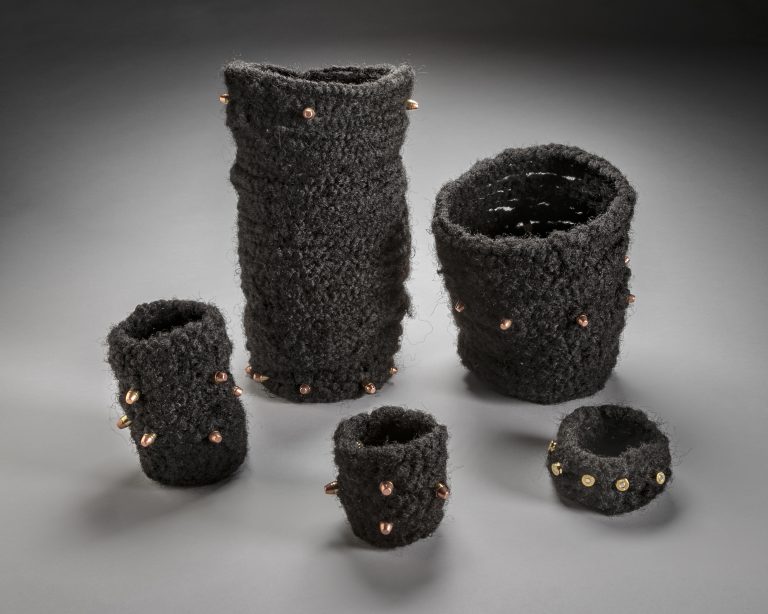My studio practice is rooted in creation and process. Through making, I develop a certain understanding of parts of myself and the world I exist in. My work is influenced by textile practices that are seen today but carry traces of the past. Pulling inspiration from my personal experiences, I use Black hair and Black hair narratives as a material and immaterial search for a free Black feminine form. Black history, specifically of Black women, is found in the crevices or the peripheral, left to be uncovered and rewritten. These stories become archaeological relics that require the finder to interpret and make space for those who were lost by those crushing, suffocating visions of their bodies. What is fascinating and disheartening when contending with fixtures in the archives is the illumination of moments of autonomy and instances of radical rebellion amongst those women existing at that time. These acts create spaces and reveal hidden tactics that can be considered as examples of freedom gestures. I am looking for freedom gestures through the archive, personal narratives, popular culture, and the everyday living of Black women.

The moment of clarity in my studio practice started interestingly on the floor of my mother’s home. I saw a strand of hair weave that I did not use for a hairstyle that I was completing. I watched the object for a while, sitting with its possibility. The strand of weave, found bare on the street, detached from its root. That slippage between the real and the fake, the untethered, filled me with a significant curiosity. At the time, I was an undergraduate, just forming my artistic sensibility. It never occurred to me that the artwork was so close to home.

Hair Rug, Nneka Kai, 2017 -on going, Synthetic afro hair, thread, 67”
As an artist, I am drawn to not only the designs of these braided styles but the framework this art form built. Learning to cornrow from my mother, from not only her instruction but from the grips of her hands intertwining my strands in rhythmic patterns. I formed a certain body awareness. I am interested in hair as a theory of material where we can begin to engage with Black feminist praxis. Claiming hairwork is a performative gesture that reveals elements of autonomy through intimacy, creative expression, and lasting.
Even though my work is materially tied to Black hair, I find it essential to pull from the legacy of Black sound, speech, and performance tied to rebellion, communication, and healing. Techniques that are spread through oral traditions or embodied knowledge. Since the pandemic and the protest against police brutality, I created a series of performances entitled “ODES.” These performances are pop-up site activations, where I and several of my collaborators engage with a specific Black site—thinking of how these places still exist but are on the verge of erasure, how those spaces are monuments in their own right. Having resided in these places, growing up in Atlanta, each location holds a personal connection. It’s a homage to the mundane.

Nneka Kai is an interdisciplinary artist from Atlanta, Georgia. She received her MFA from The School of the Art Institute of Chicago in 2019 and a BFA from Georgia State University in 2017. Kai’s work is a fluid material exploration of a black radical feminine identity through quotidian gestures and minimalist and abstract aesthetics.
For more about Nneka Kai’s work:
Website: https://www.nnekakai.com/
Instagram: @nneka_kai
Nneka Kai presented, “Sitting between My Mother’s Legs, I Learned about the World”, as part of Session 10D for the TSA’s Virtual 2020 Symposium:

You must be logged in to post a comment.